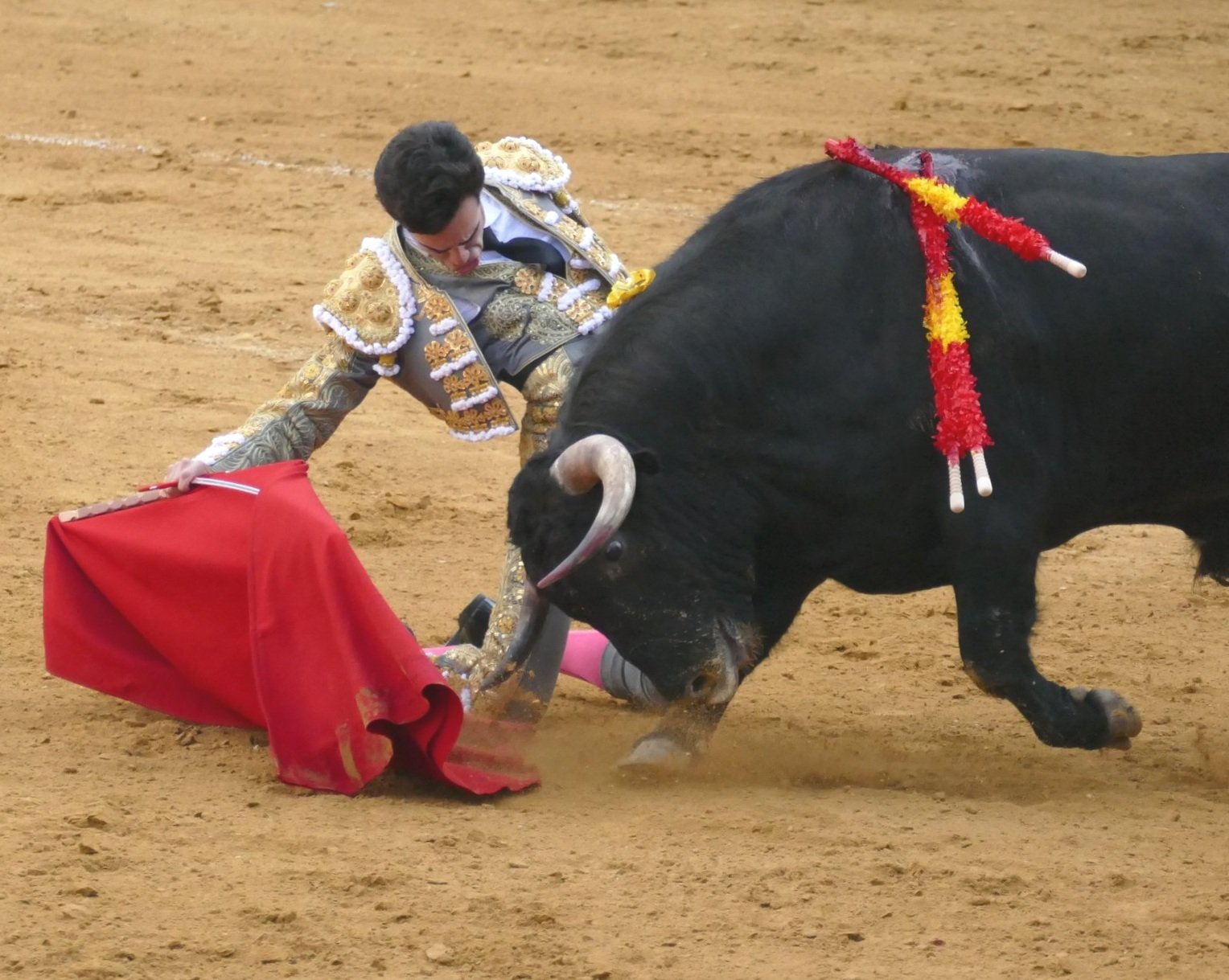Valladolid, September 10: Everyone out on shoulders
Valladolid’s Feria de la Virgen de San Lorenzo ended with all three matadors, a member of the ganadero’s family and the mayoral leaving the plaza on shoulders after eight ears were cut from an excellent encierro of Victoriano del Río bulls: but for some swordwork, it could easily have been more.
José María Manzanares was the triunfador de la tarde, cutting two ears off each of his bulls. It was the best afternoon I have seen from the alicantino in a long time. His first bull, at 493 kilos the smallest of the afternoon, was whistled on entry, but it proved keen on the lure and its novillo-like appearance was soon forgotten. José Mari closed his opening verónicas with a delicate media, then began the faena walking the bull away from las tablas before starting to circle the animal around his body in derechazos. He was equally proficient with the left hand. Manzanares’ bad habit is to keep the bull at a distance - he did that just once here, a spectator in the tendido behind me acknowledging the defect with a whistle, and (but for a similar single occurrence - and refrain - during his faena to his second bull) he never did it again, keeping his humillando partner close. He ended with one of his recibiendo estocadas, which had immediate effect.
The same occurred with his second bull, this one the recipient of a volapié estocada. This time, Manzanares’s naturales were the high point (his banderilleros also took deserved saludos) and there was no doubting the award of a further two ears. Today had seen two excellent performances from the alicantino.
Sebastián Castella, heading the cartel, also had two worthy accomplices in his 546-kilo Toros de Cortés opener and his subsequent 578-kilo victoriano. The Frenchman seems to have returned to the rings a more considered torero, one concerned with temple, which he immediately expressed with slow verónicas and a larga. A fine controlled quite of chicuelinas, tafalleras and another larga followed, while the faena was solid and professional, conducted mainly on the right hand and including circulares and an interminable series of manoletinas. He ended with a strong sword, but I was not the only spectator in my tendido to be surprised at the president’s display of a second white handkerchief.
Sebastián was on course for another reward from his second excellent bull (punished en varas not by the puya, but more by its pushing horse and rider half-way across the plaza). He gave it a long faena, hearing an aviso as he began to prepare the animal for the kill, and then plunged the sword - to his clear frustration - into the bull’s side. He also heard an aviso before the animal fell to the ground.
The third espada was young Tomás Rufo, and, as he stepped out to begin his opening faena, one wondered if he’d be able to sustain the impact that Castella and Manzanares had set on their initial bulls. One needn’t have worried - after some splendid opening verónicas, he began his faena by getting down on his knees, citing the bull from a distance and capturing his opponent in a terrific series of derechazos. Back on his feet for closing derechazos and a chest pass, the whole sequence brought several spectators to their feet. More linked derechazos, naturales (in particular, two tandas with the muleta kept low throughout), curving pases de pecho and distainful desdenes, followed by a hugely committed kill, led to an award of two ears.
Tomás was keen to add to this tally with the final bull of the corrida, the heaviest at 624 kilos and the only member of the encierro that needed some persuasion to get moving. Some lovely, slow, verónicas and larga were followed by a quite of delantales and a beautifully executed media verónica. The faena, notwithstanding the problems posed by the bull, was a strong one, but his two pinchazos, a media estocada and a descabello saw it end to an aviso and applause.






